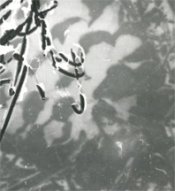M Carter
Member
I haven't done plate work, but I'll toss in that I really love the Foma liquid emulsion (for those using Liquid light, etc).
I heat it in a stainless film tank in warm water. Doesn't fog with my superbright-brand LED safelights. it's about a contrast grade 3 or so though. Gorgeous stuff.
I dry it in a darkroom closet with a fan on the floor. I've done it on canvas up to about 15x22". Funny, I got the 1 kilo bottle of it and then it took me two YEARS to get around to trying it. Kept in the fridge it's still 100% perfect. Expensive ($120 a kilo, which is shy of a quart), but you get a lot of emulsion for the money.
I heat it in a stainless film tank in warm water. Doesn't fog with my superbright-brand LED safelights. it's about a contrast grade 3 or so though. Gorgeous stuff.
I dry it in a darkroom closet with a fan on the floor. I've done it on canvas up to about 15x22". Funny, I got the 1 kilo bottle of it and then it took me two YEARS to get around to trying it. Kept in the fridge it's still 100% perfect. Expensive ($120 a kilo, which is shy of a quart), but you get a lot of emulsion for the money.



 with the tintypes you want a really thin coat if the emulsion is
with the tintypes you want a really thin coat if the emulsion is 


